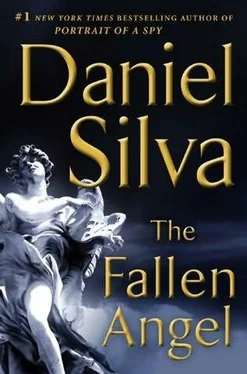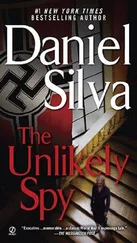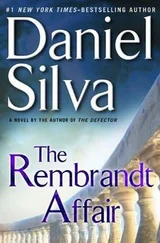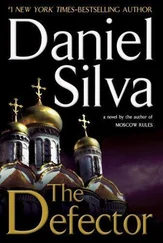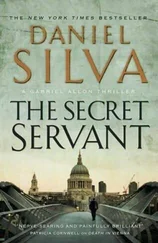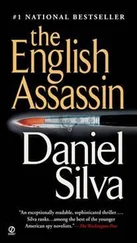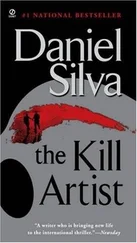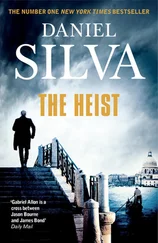Gabriel’s faith was rewarded the following morning, when Unit 8200 overheard Durand booking first-class accommodations on the midday TGV train to Marseille. Yaakov and Oded made the trip with him, and at five that evening, they observed their quarry make a mildly clandestine meeting in the Old Port with a local fisherman. Later, they would identify the “fisherman” as Pascal Rameau, leader of one of Marseille’s many criminal organizations.
It was at this point that the operation appeared to gather its first momentum, for within twenty-four hours of Durand’s visit, members of Rameau’s crew were casing the Belgian’s lavish villa. Gabriel knew this because two members of his own crew, Yossi and Rimona, had taken a short-term lease on a villa in the hills above the property and were watching it constantly with the help of long-lens cameras and video recorders. They never saw Rameau’s men again. But two nights later, as a violent storm laid siege to the entire length of the Côte d’Azur, they were awakened by the wail of sirens along the coast road. For the next several hours, they watched blue lights flashing despondently in the drive of the Belgian’s seaside palace. The police scanner told them everything they needed to know. One Cézanne, one Greek vase, no arrests. C’est la vie .
It was in all the papers, which is exactly what they had hoped for. The Cézanne was the main attraction; the Greek vase, a lovely hydria by the Amykos Painter, a mere afterthought. The distraught Belgian owner offered a substantial reward for information leading to the recovery of his goods, while his insurers, the great Lloyd’s of London, quietly let it be known that they would consider making a ransom payment. The French police knocked on a few doors and questioned a few of the usual suspects, but after a week they decided they had more important things to do than chase down a swath of canvas and a very old lump of clay. Besides, they had dealt with this band of thieves before. These men were pros, not adventurers, and when they stole something, it never reappeared.
The theft sent the usual tremors of apprehension through the art galleries of Paris, but in Maurice Durand’s world it was but a pebble cast upon an otherwise tranquil surface. They overheard him discussing the case with his favorite waitress at the brasserie, but otherwise his life moved at the same monotonous rhythm. He opened his shop at ten. He lunched at one. And at five o’clock sharp, he treated himself to the pleasures of Madame Brossard and then drank his red wine for the sake of his guiltless little heart.
Finally, a week after the theft, he rang Gabriel on a prearranged number to say the items he had requested—an early twentieth-century Swiss pocket barometer and a brass-and-wood telescope by Merz of Munich—had arrived safely. At Gabriel’s request, Durand delivered the items that evening to the flat overlooking the Pont Marie and departed as quickly as he could. The painting, a landscape of Cézanne’s beloved Mont Saint-Victoire, had been expertly removed from its stretcher and placed in a cardboard tube. The hydria was packed into a nylon Adidas sports bag. Eli Lavon removed it and placed it carefully on the kitchen table. Then he sat there for several minutes with Gabriel at his side, staring at the image of the Greek maidens attending to the nude athletes.
“Someone has to do it,” Lavon said finally, “but it’s not going to be me.”
“I’m a restorer,” said Gabriel. “I couldn’t possibly.”
“And I’m an archaeologist,” Lavon replied defensively. “Besides, I’ve never been one for the rough stuff.”
“I’ve never assassinated a vase.”
“Don’t worry,” Lavon said. “Unlike your previous work, it will only be temporary.”
Gabriel exhaled heavily, returned the hydria to the Adidas sports bag, and gently pushed it over the edge of the table. The sound it made on impact was like the shattering of bone. Lavon slowly opened the zipper and peered mournfully inside.
“Murderer,” he whispered softly.
“Someone had to do it.”
The Cézanne, however, received no such maltreatment. Indeed, during the final hours of the team’s stay in Paris, Gabriel ministered tenderly to its wounds as though it were a patient in intensive care. His goal was to stabilize the image so that the painting could one day be returned to its owner in the same condition in which it had been found. No ordinary art thief would ever have taken such a step, but Gabriel’s commitment to operational verisimilitude went only so far. He was a restorer first and foremost, and caring for the Cézanne helped to relieve his guilt over breaking the vase.
He briefly considered returning the canvas to a stretcher, but ruled out such a procedure on the grounds it would make the painting too difficult to move securely. Instead, he adhered a protective layer of tissue paper to the surface using a rabbit-skin glue that he concocted in the kitchen of the Bois de Boulogne safe flat. Next morning, when the glue had dried, he returned the canvas carefully to its cardboard tube and ferried it to the Israeli Embassy at 3 rue Rabelais. The Office station chief was understandably apprehensive about accepting stolen property, but he relented after receiving a phone call from Uzi Navot. Gabriel tucked the painting into a moisture-free corner of the station’s vault and set the thermostat to a comfortable sixty-eight degrees. Then he headed to the Gare de Lyon and boarded the midday train for Zurich.
He passed the four-hour journey plotting the next phase of the operation, and by six that evening, he was guiding a rented Audi sedan down the graceful sweep of Zurich’s Bahnhofstrasse. Seated next to him, the Adidas sports bag between his feet, was Eli Lavon. “Switzerland,” he said, staring glumly out his window. “Why does it always have to be Switzerland?”
23
ST. MORITZ, SWITZERLAND
BY THEN IT WAS MARCH, which meant that St. Moritz, the quaint former spa town in the Upper Engadine valley, was once more in the grip of madness. On the Via Serlas, perhaps the world’s costliest shopping street, faded aristocrats wandered aimlessly from Chopard to Gucci to Chanel to Bulgari, along with film stars, supermodels, politicians, tycoons, and all their entourages and assorted hangers-on. They fought over the best tables at La Marmite or the Terrace and at night smiled their way into the private rooms at Dracula or the King’s Club. Only a handful ever bothered to put on a pair of skis. In St. Moritz, skiing was the pastime of those who didn’t have something better to do.
But tucked away on a quiet side street like an island of reason was the stately old Jägerhof Hotel. She was dowdy and dour and, most of all, unfashionable, which troubled her not one whit. Indeed, she seemed to revel in it. Her restaurants were without note; her amenities, such as they were, were second to everyone. She had no spa or indoor swimming pool and no nightclub to lure those who liked to see their names in boldface. The only music one ever heard at the Jägerhof was the sound of the string quartet that sawed away in the salon each afternoon during the drowsy lull euphemistically referred to as après ski.
Her rooms, like her manners, were dusty relics from another time. Returning guests tended to request the lower floors because the lift was forever breaking down, while those seeking a bargain gravitated to the cramped garrets. Staying in one was a tall, lanky Russian with gray eyes and bloodless skin the color of the snow atop the Piz Bernina. Sadly, he had severely twisted his knee on the first day of his holiday and had been largely confined to his room ever since. Occasionally, he would sit in the tiny arrow slit of a window and gaze longingly into the street, but for the most part he remained in his bed with his injured leg elevated. To pass the time, he watched movies and listened to music on his notebook computer. The chambermaids described him as polite to a fault, which was unusual for a Russian.
Читать дальше
Конец ознакомительного отрывка
Купить книгу
